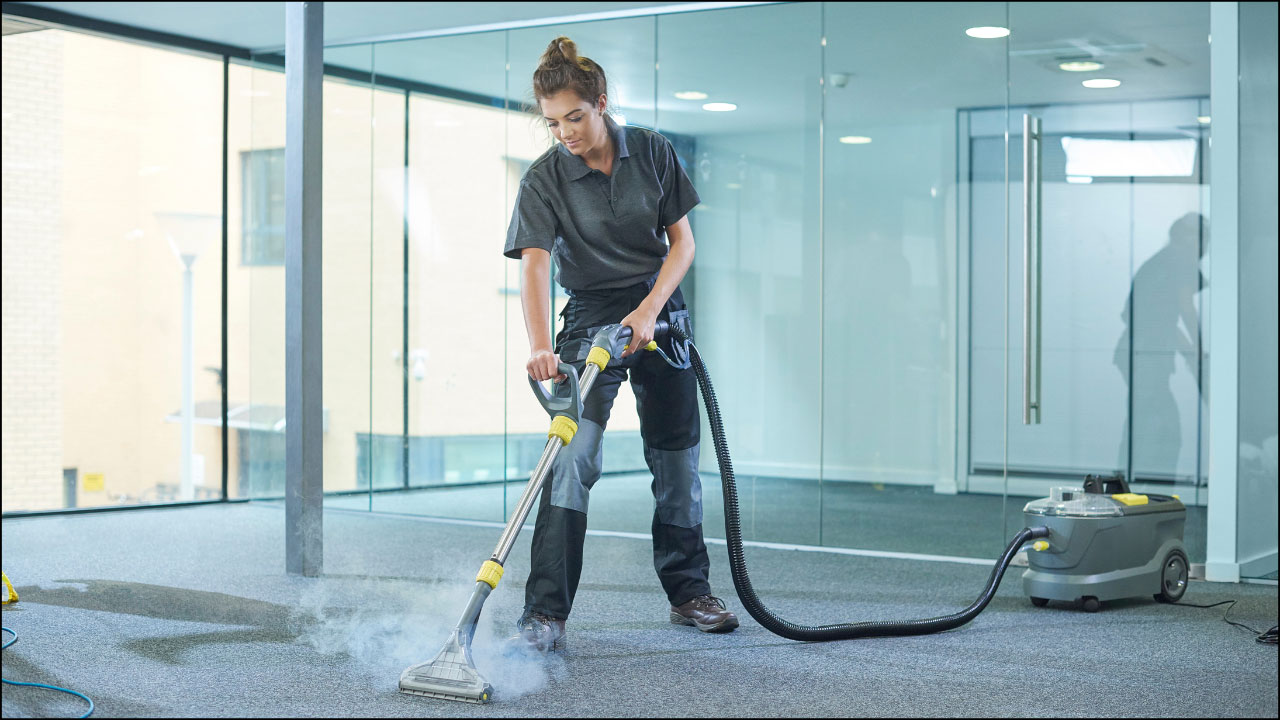Key Takeaways
- Dry carpet cleaning uses minimal moisture, allowing for rapid drying times and reducing the risk of water damage.
- Dry carpet cleaning methods include dry compound cleaning, encapsulation, and bonnet cleaning, each with unique advantages.
- Steam cleaning, or hot water extraction, is effective for deep cleaning but requires a longer drying time.
- Selecting the appropriate carpet cleaning method depends on the type of carpet, level of soiling, and specific cleaning needs.
- Regular maintenance, including vacuuming and professional cleanings, is essential for extending the life of your carpets.
Dry carpet cleaning is an innovative method for cleaning carpets that has gained popularity due to its effectiveness and convenience. Unlike traditional steam cleaning or hot water extraction, dry carpet cleaning uses minimal moisture, allowing for rapid drying times and reducing the risk of water damage.
This method is particularly advantageous for commercial carpet environments and spaces that require quick turnaround times. Let’s explore the ins and outs of dry carpet cleaning, including its process, benefits, and how it compares to other carpet cleaning methods.
Unveiling the Dry Carpet Cleaning Process
Dry carpet cleaning involves the use of a specialized machine and cleaning solutions designed to clean the carpet with little to no water. The key components of this process include:
- Preparation: The carpet is thoroughly vacuumed to remove loose dirt and debris. This step is crucial for the effectiveness of the dry cleaning process.
- Application of Cleaning Agents: A dry compound or powder, often mixed with cleaning agents, is evenly distributed over the carpet. This compound is designed to attract and absorb dirt and grime from the carpet fibers.
- Agitation: A specialized machine with rotating brushes works the dry compound into the carpet. This action helps to loosen and lift dirt from the fibers.
- Extraction: After the compound has had time to work, it is vacuumed up along with the absorbed dirt and debris, leaving the carpet clean and fresh.
Benefits of Dry Carpet Cleaning
Dry carpet cleaning offers several advantages over traditional methods like steam cleaning:
- Rapid drying times: Since minimal moisture is used, carpets are ready for use almost immediately after cleaning, which is ideal for busy environments.
- Reduced risk of water damage: With no excessive water involved, there is less chance of mold or mildew growth in the carpet padding or underlay.
- Effective for various types of carpets: Dry cleaning is suitable for a wide range of types of carpets, including delicate materials that might be damaged by excessive moisture.
- No sticky residue: The cleaning compounds used in dry cleaning do not leave behind any sticky residue that could attract future stains.
Dry Carpet Cleaning vs. Steam Cleaning
When comparing dry carpet cleaning vs. steam cleaning, it’s essential to consider the specific needs and conditions of the carpet and the environment:
- Steam carpet cleaning (or hot water extraction) involves injecting hot water and a carpet cleaning solution into the carpet, and then extracting the dirty water with a powerful vacuum. This method is highly effective for deep cleaning and removing stubborn stains, but it requires a lengthy drying time.
- Dry carpet cleaning, on the other hand, uses minimal moisture and allows for rapid drying times. This method is excellent for routine maintenance and cleaning of commercial carpets or high-traffic areas where downtime must be minimized.
Types of Dry Carpet Cleaning Methods
There are several variations of dry carpet cleaning methods, each with its unique approach:
- Dry compound cleaning: As described earlier, this method uses an absorbent compound that is spread on the carpet and worked into the fibers before being vacuumed up.
- Encapsulation: This technique involves applying a cleaning solution that crystallizes into powder form, encapsulating dirt particles. The crystals are then vacuumed away, leaving the carpet clean and dry.
- Bonnet cleaning: A cleaning solution is sprayed onto the carpet, and a rotary machine with an absorbent pad (bonnet) is used to agitate and absorb the dirt. This method is commonly used for surface cleaning in commercial settings.
Choosing the Right Carpet Cleaning Method
Selecting the appropriate carpet cleaning method depends on several factors, including the type of carpet, the level of soiling, and the specific cleaning needs:
- Type of carpet: Some carpets, such as those made from natural fibers, may not withstand the moisture used in steam cleaning and are better suited for dry cleaning.
- Level of soiling: For heavily soiled carpets with deep stains, steam cleaners might be more effective due to their deep-cleaning capabilities.
- Cleaning needs: If quick turnaround and minimal disruption are priorities, dry carpet cleaning is the ideal choice.
Common Misconceptions About Dry Carpet Cleaning
There are a few misconceptions about dry carpet cleaning that need to be addressed:
- Effectiveness: Some people believe that dry cleaning is not as effective as steam cleaning for deep cleaning. However, advancements in dry cleaning technology have made it highly effective for maintaining clean carpets.
- Harsh chemicals: Another misconception is that dry cleaning uses harsh chemicals. Modern dry cleaning solutions are formulated to be safe for both carpets and occupants, including pets and children.
Maintaining Your Carpets Post-Cleaning
Proper maintenance is crucial to extend the life of your carpets and keep them looking fresh. Here are some tips for maintaining carpets after a professional dry cleaning:
- Regular vacuuming: Regular vacuuming helps remove surface dirt and dust particles, preventing them from embedding deeper into the carpet fibers.
- Spot cleaning: Address spills and stains promptly with appropriate spot cleaning techniques to prevent them from becoming permanent.
- Professional cleanings: Schedule regular professional cleanings based on the level of foot traffic and the specific needs of your carpets. For most households, professional cleanings every 12 to 18 months are recommended.
Understanding what is dry carpet cleaning and how it compares to other methods like steam carpet cleaning can help you make informed decisions about maintaining your carpets. Dry carpet cleaning offers many benefits, including rapid drying times, reduced risk of water damage, and suitability for various types of carpets.
By choosing the right carpet cleaning method and following proper maintenance practices, you can enjoy clean, fresh carpets for years to come.
For expert carpet cleaning services, contact Janitorial Cleaning Los Angeles today. Our professional team is equipped with the latest technology and techniques to ensure your carpets are thoroughly cleaned and well-maintained.



